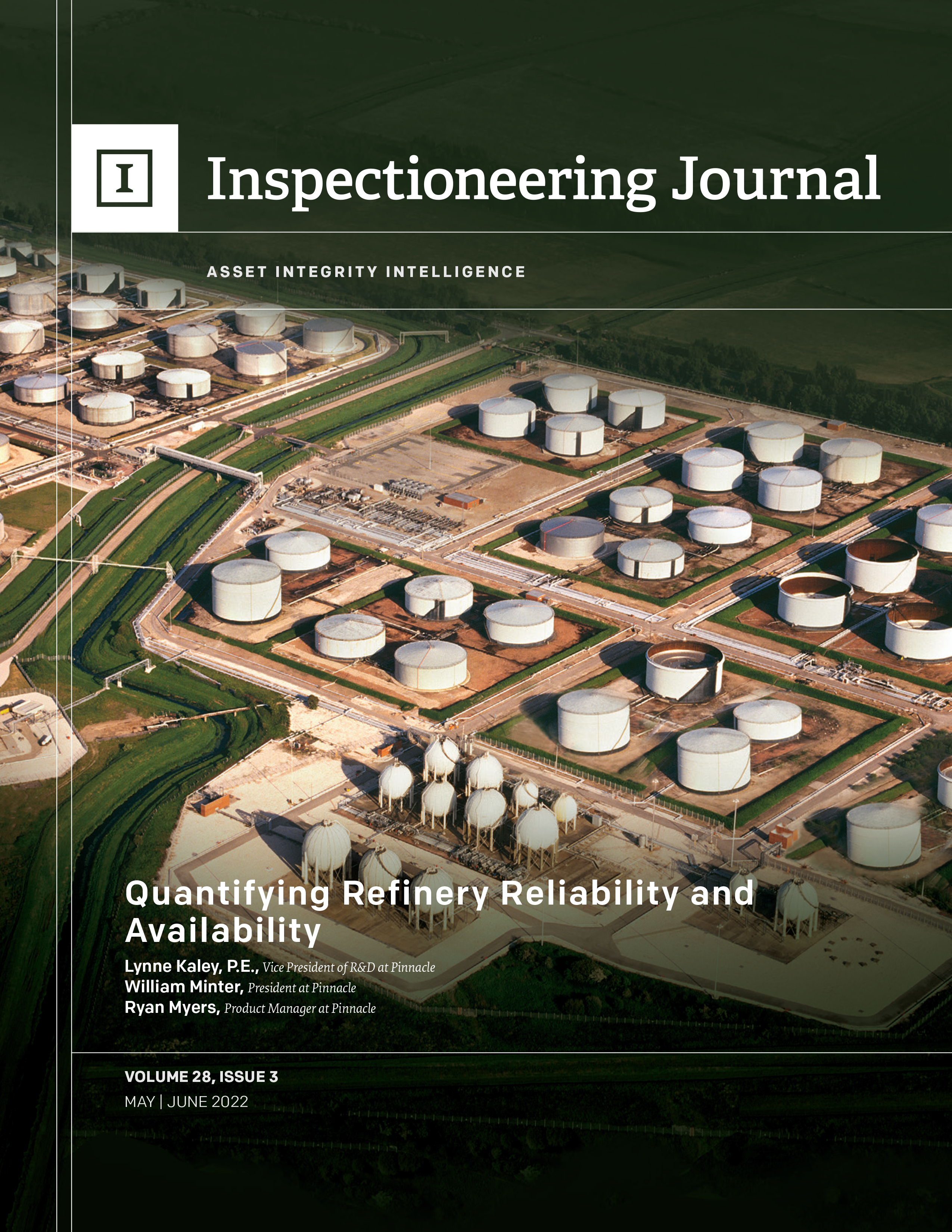Quantifying Refinery Reliability and Availability
Inspectioneering Journal, May/June 2022 Issue
“Should we be doing more? Are we spending too much? Can we be certain that the actions we’re taking are worth the investment? How can we be more confident that our planned maintenance, monitoring and repair, replace, and upgrade activities are worth the investment and will ensure a change in availability?”
Plant leadership at a large international energy company asked these questions after experiencing a significant drop in plant-wide availability at one of its larger refineries due to a hydrocracker unit. While the plant had previously implemented a risk-based inspection (RBI) program and a reliability centered maintenance (RCM) study, these methodologies seemed subjective and overly conservative and ultimately, were not capable of quantifying results that would provide plant leadership with the confidence that they would realize the availability improvements they were seeking.
The plant decided to pilot Quantitative Reliability Optimization (QRO) to better evaluate equipment risk and predict future availability. The QRO pilot occurred in three phases:
- Phase 1: A unit or complex that aligned with plant objectives was identified and leveraged to create a unit model. Baseline risk and availability for the plant’s current tasks were calculated.
- Phase 2: The analysis was updated and modeled with future planned tasks to determine future reliability performance.
- Phase 3: An optimized inspection, maintenance, and monitoring task and activity plan that met defined criteria for risk, availability, and cost was created.

Meet the Authors
Want to further explore how to leverage data science to drive more value from your data?
Reach out to our authors, Vyacheslav Nadvoretskiy or Andrew Waters.
Stay in the know.
Providing data-driven insights, perspectives, and industrial inspiration from the forefront of the reliability transformation.